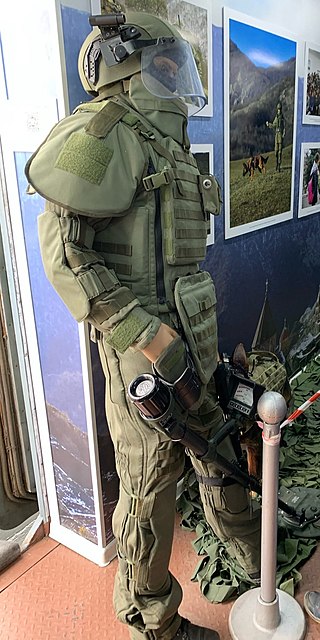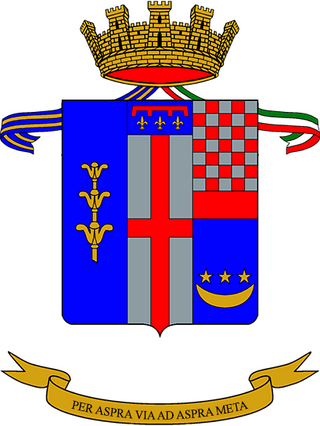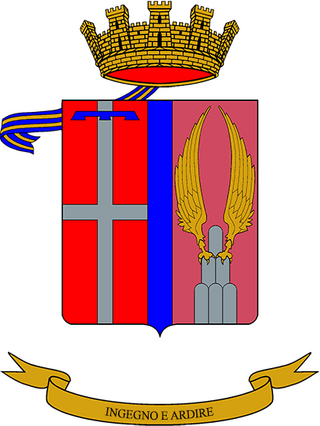
A sapper, also called a combat engineer, is a combatant or soldier who performs a variety of military engineering duties, such as breaching fortifications, demolitions, bridge-building, laying or clearing minefields, preparing field defenses, and road and airfield construction and repair.

The 19th Indian Infantry Division was an infantry division of the Indian Army during World War II, and played a prominent part in the final part of the Burma Campaign.
The Malaya Command was a formation of the British Army formed in the 1920s for the coordination of the defences of British Malaya, which comprised the Straits Settlements, the Federated Malay States and the Unfederated Malay States. It consisted mainly of small garrison forces in Kuala Lumpur, Penang, Taiping, Seremban and Singapore.

The Indian Army Corps of Engineers is a combat support arm which provides combat engineering support, develops infrastructure for armed forces and other defence organisations and maintains connectivity along the borders, besides helping the civil authorities during natural disasters. College of Military Engineering, Pune (CME) is the premier technical and tactical training institution of the Indian Army Corps of Engineers.

A pioneer is a soldier employed to perform engineering and construction tasks. The term is in principle similar to sapper or combat engineer. Pioneers were originally part of the artillery branch of European armies. Subsequently, they formed part of the engineering branch, the logistic branch, part of the infantry, or even comprised a branch in their own right.

The Bengal Engineer Group (BEG) is a military engineering regiment in the Corps of Engineers of the Indian Army. The unit was originally part of the Bengal Army of the East India Company's Bengal Presidency, and subsequently part of the British Indian Army during the British Raj. The Bengal Sappers are stationed at Roorkee Cantonment in Roorkee, Uttarakhand.

The Bombay Engineer Group, or the Bombay Sappers as they are informally known, are a regiment of the Corps of Engineers of the Indian Army. The Bombay Sappers draw their origin from the erstwhile Bombay Presidency army of the British Raj. The group has its centre in Khadki, Pune in Maharashtra state. The Bombay Sappers have gone on to win many honours and awards, both in battle and in peacetime, throughout the 19th and 20th centuries, both before and after Independence. The gallantry awards won include the British Victoria Cross and the French Legion of Honour before independence, as well as the Param Vir Chakra and Ashok Chakra as part of Independent India. The Group has also made its mark in peacetime activities such as sport, adventure, disaster relief, aid to civil authority and prestigious construction projects.

The 2nd Engineer Regiment is a military engineer regiment of the Italian Army based in Trento in Trentino. Founded in 1860 it is currently the oldest active engineer regiment of the Italian Army. Since 1954 it has been part of the 4th Alpine Army Corps and therefore has a strong association with the army's mountain infantry corps, the Alpini, with which the regiment shares the distinctive Cappello Alpino. Today the regiment is the engineer unit of the Alpine Brigade "Julia" and specializes in mountain combat.
The Bani Bu Ali expedition (1820–21) was a punitive campaign launched by the Sultan of Muscat and the East India Company against an Omani tribe known as the Bani Bu Ali in southeastern Arabia. It consisted of two expeditions. The first was the only land campaign Said bin Sultan conducted in Arabia during his long reign. It included a small allied British force and was defeated. The second, led by a more substantial British component, resulted in a decisive victory over the Bani Bu Ali. Company units engaged in the expedition received the "Beni Boo Alli" battle honour.

Madras Engineer Group (MEG), informally known as the Madras Sappers, is an engineer group of the Corps of Engineers of the Indian Army. The Madras Sappers draw their origin from the erstwhile Madras Presidency army of the British Raj. This regiment has its HQ in Bengaluru. The Madras Sappers are the oldest of the three groups of the Corps of Engineers.
The 9th (Secunderabad) Division was an infantry division formation of the British Indian Army. It was part of the Southern Army and was formed in 1904 after Lord Kitchener was appointed Commander-in-Chief, India between 1902 and 1909. He instituted large-scale reforms, including merging the three armies of the Presidencies into a unified force and forming higher level formations, eight army divisions, and brigading Indian and British units. Following Kitchener's reforms, the British Indian Army became "the force recruited locally and permanently based in India, together with its expatriate British officers."

Abyssinia is a battle honour awarded to units of the British Indian Army and the British Army which participated in the 1868 campaign to free Europeans held hostage in Abyssinia by Emperor Tewodros II. The success of the expedition led to the award of this honour to units of the British Indian Army which had participated in the campaign. The units belonged, with the exception of the Madras Sappers, to the Bengal and Bombay Presidency Armies.

The Indian Army Pioneer Corps or Pioneers is the operational logistics arm of the Indian Army. Though not a combat arm, the Pioneer Corps provide disciplined and well trained manpower where civilian labour is either not available or its employment is not desirable for reasons of security. Pioneer units are mostly committed in forward and operational areas. Although the Pioneer Corps were at one time the third largest troop in the Army and had a total of 26 Pioneer Companies even till 1999, today there are 21 Pioneer Units under various commands. The Pioneer Corps Training Center (PCTC) is currently located in Bangalore.

The 10th Engineer Regiment is a military engineer regiment of the Italian Army based in Cremona in Lombardy. Today the regiment is the engineer unit of the 132nd Armored Brigade "Ariete".

The 4th Engineer Regiment is a military engineer regiment of the Italian Army based in Palermo in Sicily. Today the regiment is the engineer unit of the Mechanized Brigade "Aosta".

The 3rd Engineer Regiment is a military engineer regiment of the Italian Army based in Udine in Friuli-Venezia Giulia. Today the regiment is the engineer unit of the Cavalry Brigade "Pozzuolo del Friuli".

The 6th Pioneer Regiment is a military engineer regiment of the Italian Army based in the Cecchignola quarter of Rome. Today the regiment is administratively assigned to the army's Engineer Command and the army's sole pioneer unit, whose focus, unlike the army's other engineer units, is on rear area construction tasks.

The 1st Engineer Regiment is an inactive military engineer unit of the Italian Army, which was last based in Trento in Trentino. Founded in 1848 it is the oldest engineer regiment of the Italian Army.
















